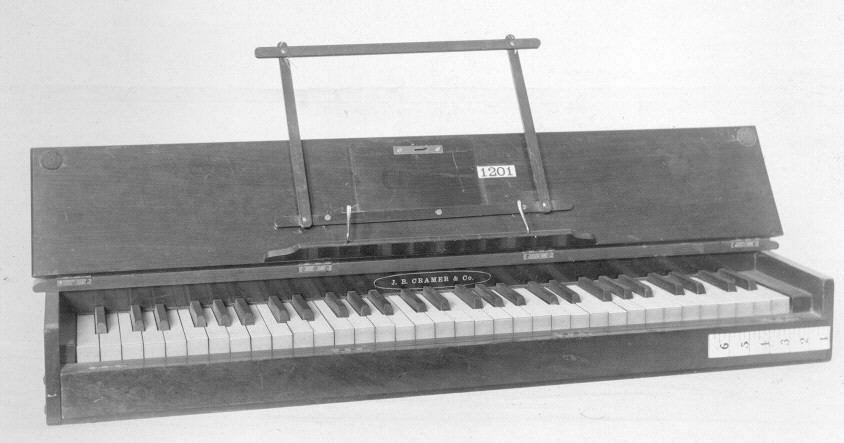Piano Harmonica
Not on view
The J. B. Cramer & Co. firm was known for its reed organs and harmoniums. However, this innovative instrument uses a grand piano action to strike metal tongues to produce sound, instead of the strings found inside of a piano.
Walnut case held together with large screws, rectangular when viewed from above, without legs or stand, enclosing a keyboard (compass 61 keys, ivory naturals, ebony accidentals) that controls a simple English grand piano action whose felted hammers, extending forward toward the player, strike thin steel tongues; these tongues are graduated in length and width and are screwed at the back end to a metal bar that extends beneath a removable wood panel; panel, bar, and tongues can be removed as one unit, and are mounted above the piano action in a raised portion of the case, covered by a hinged lid and fronted with a cloth-backed fret-work panel; the keyboard is covered by a fallborad holding a hinged music rack, below which is the nameboard; no damper mechanism or resonators. (Laurence Libin 4 Oct. 77)
This image cannot be enlarged, viewed at full screen, or downloaded.
This artwork is meant to be viewed from right to left. Scroll left to view more.



